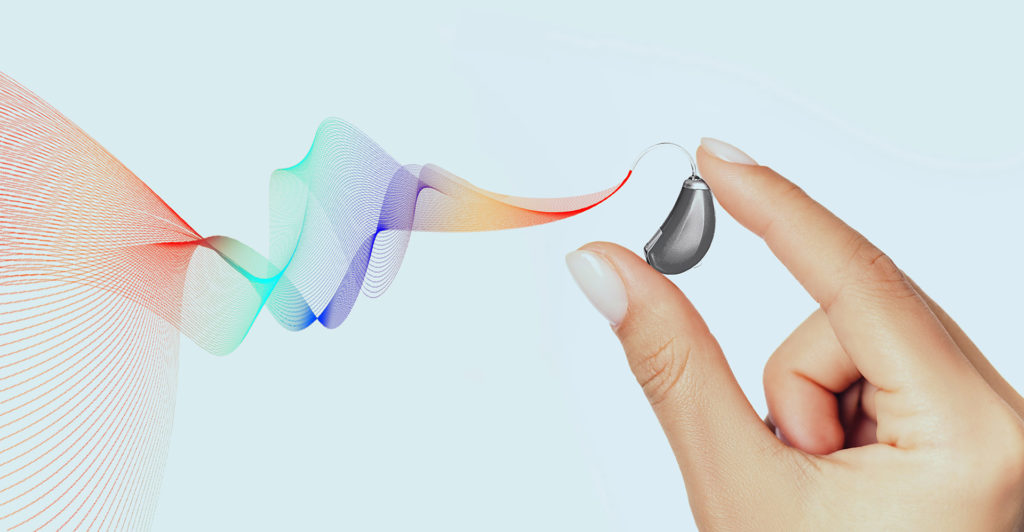Modern technology is often expected to do wonders for the 360 million people worldwide affected by hearing difficulties. When we see what can be done with implantable devices for diseases such as diabetes, cataracts, and heart rhythm abnormalities it is not surprising that we hold the hearing industry and specialists to such high standards. Compared to some other industries, some complain that progress seems frustratingly slow. While it is true that hearing aids cannot fully correct for all hearing difficulties, today they are more comfortable and effective than ever.
First, let’s look into the problem that those with hearing difficulties face. A common contributor to hearing difficulties is age-related hearing loss. Factors that contribute to the problem include heredity, and life experiences such as noise exposure and a variety of diseases. Age-related hearing loss affects the sensory receptors and connections in the inner ear as well as the brain’s ability to process the rapid nature of spontaneous speech. As a result, not only is the ear less sensitive to sound, but the reception of sound is the distorted, making it more difficult to separate out speech from noise in the environment. It is relatively simple to make sounds louder with hearing aids but compensating for the distortion and loss of resolution of the speech we want to hear is much more difficult.
The application of technology helps with the problem of hearing and understanding in the presence of noise. Technological features to address this problem in today’s hearing aids include:
- Directional microphones which are directed by logic systems in the hearing aid or by switching by the user to focus the sensitivity of the hearing aid toward the desired conversation.
- Digital noise reduction which uses advanced techniques to identify bothersome noise and reduce it while attempting to preserve desired speech.
- Accessories that put the desired conversation closer to a microphone to increase the emphasis on the desired conversation.
- Rechargeable options for all day use without running short of power
- Artificial Intelligence to help classify noise and apply stored proven techniques to reduce the effects of noise and enhance desired speech.
- Direct blue tooth connectivity with telephones and accessories.
Hearing aids come in different styles or “Form factors” which are selected by the prospective user and the hearing professional. All hearing aids include some or all of the features noted above.
What about medicine or surgery to correct for hearing loss? It is less common today than it was a half-century ago, but there are some conditions that respond to medical treatment. Your hearing specialist is trained to identify any medical issues and refer to specialists as necessary.
There are special purpose “Bone Anchored” hearing aids for some applications when the more common air conduction hearing aids are inappropriate. The primary use of these surgically implanted devices is to overcome the loss of hearing due to a malformation of the ear canal or similar anatomic limitation. Other surgically implanted devices are being developed but have not been adopted by the broader market.
Cochlear implants were introduced in the 1970s and have steadily improved since then. Originally only for those who could not benefit from hearing aids, they are now a much more common treatment for severe hearing loss. Cochlear implants involve surgically implanting an electrode in the inner ear to provide electrical signals that the brain can learn to interpret as meaningful sound. Those with severe to profound hearing loss who are struggling with traditional hearing aids often find that the invasive surgery and cost is well worth the investment.
Technology used in hearing aids follows the development of electronic devices and components used for many communication products. Hearing aids differ because they need to be very small and cannot fit the typical battery and circuitry used in consumer devices such as cell phones. Every year, hearing aid manufacturers spend millions of dollars to develop technically advanced, small hearing aids that can be comfortably worn by those needing them. Today, hearing aids are better performing, more weatherproof, and more reliable than those made just five years ago. At our clinics, our hearing loss experts can find the right technological solutions to fit your needs. If you are concerned about hearing loss, or are exhibiting any of the symptoms or risk factors associated with it, schedule an appointment with one of our hearing specialists today.

